Peifeng Li
ICR: Iterative Clarification and Rewriting for Conversational Search
Sep 05, 2025Abstract:Most previous work on Conversational Query Rewriting employs an end-to-end rewriting paradigm. However, this approach is hindered by the issue of multiple fuzzy expressions within the query, which complicates the simultaneous identification and rewriting of multiple positions. To address this issue, we propose a novel framework ICR (Iterative Clarification and Rewriting), an iterative rewriting scheme that pivots on clarification questions. Within this framework, the model alternates between generating clarification questions and rewritten queries. The experimental results show that our ICR can continuously improve retrieval performance in the clarification-rewriting iterative process, thereby achieving state-of-the-art performance on two popular datasets.
Improving Dialogue Discourse Parsing through Discourse-aware Utterance Clarification
Jun 18, 2025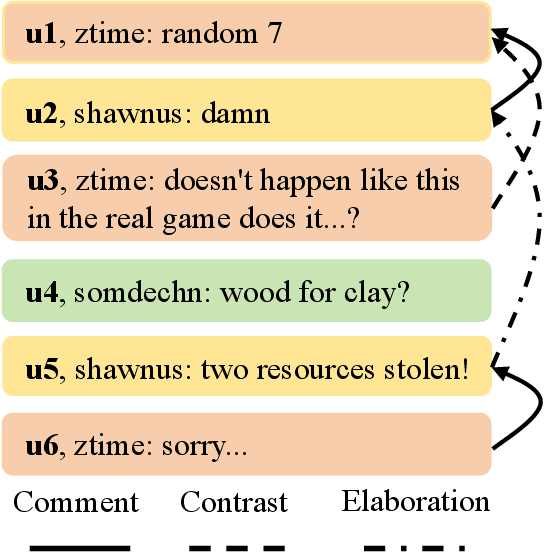
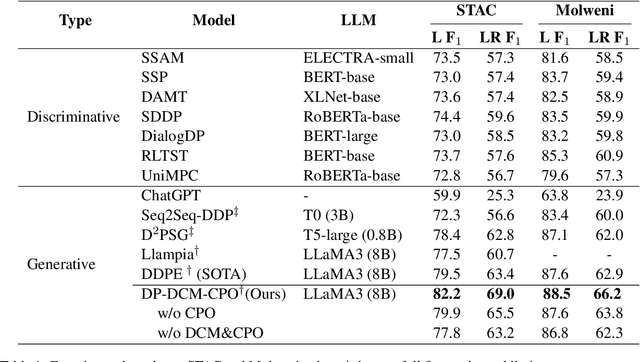
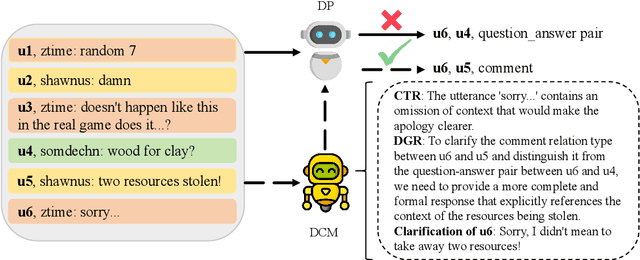
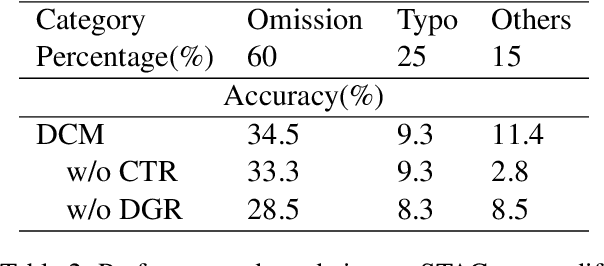
Abstract:Dialogue discourse parsing aims to identify and analyze discourse relations between the utterances within dialogues. However, linguistic features in dialogues, such as omission and idiom, frequently introduce ambiguities that obscure the intended discourse relations, posing significant challenges for parsers. To address this issue, we propose a Discourse-aware Clarification Module (DCM) to enhance the performance of the dialogue discourse parser. DCM employs two distinct reasoning processes: clarification type reasoning and discourse goal reasoning. The former analyzes linguistic features, while the latter distinguishes the intended relation from the ambiguous one. Furthermore, we introduce Contribution-aware Preference Optimization (CPO) to mitigate the risk of erroneous clarifications, thereby reducing cascading errors. CPO enables the parser to assess the contributions of the clarifications from DCM and provide feedback to optimize the DCM, enhancing its adaptability and alignment with the parser's requirements. Extensive experiments on the STAC and Molweni datasets demonstrate that our approach effectively resolves ambiguities and significantly outperforms the state-of-the-art (SOTA) baselines.
Enhancing Goal-oriented Proactive Dialogue Systems via Consistency Reflection and Correction
Jun 16, 2025Abstract:This paper proposes a consistency reflection and correction method for goal-oriented dialogue systems.
FMNV: A Dataset of Media-Published News Videos for Fake News Detection
Apr 10, 2025Abstract:News media, particularly video-based platforms, have become deeply embedded in daily life, concurrently amplifying risks of misinformation dissemination. Consequently, multimodal fake news detection has garnered significant research attention. However, existing datasets predominantly comprise user-generated videos characterized by crude editing and limited public engagement, whereas professionally crafted fake news videos disseminated by media outlets often politically or virally motivated pose substantially greater societal harm. To address this gap, we construct FMNV, a novel dataset exclusively composed of news videos published by media organizations. Through empirical analysis of existing datasets and our curated collection, we categorize fake news videos into four distinct types. Building upon this taxonomy, we employ Large Language Models (LLMs) to automatically generate deceptive content by manipulating authentic media-published news videos. Furthermore, we propose FMNVD, a baseline model featuring a dual-stream architecture integrating CLIP and Faster R-CNN for video feature extraction, enhanced by co-attention mechanisms for feature refinement and multimodal aggregation. Comparative experiments demonstrate both the generalization capability of FMNV across multiple baselines and the superior detection efficacy of FMNVD. This work establishes critical benchmarks for detecting high-impact fake news in media ecosystems while advancing methodologies for cross-modal inconsistency analysis.
Two-stage Incomplete Utterance Rewriting on Editing Operation
Mar 20, 2025Abstract:Previous work on Incomplete Utterance Rewriting (IUR) has primarily focused on generating rewritten utterances based solely on dialogue context, ignoring the widespread phenomenon of coreference and ellipsis in dialogues. To address this issue, we propose a novel framework called TEO (\emph{Two-stage approach on Editing Operation}) for IUR, in which the first stage generates editing operations and the second stage rewrites incomplete utterances utilizing the generated editing operations and the dialogue context. Furthermore, an adversarial perturbation strategy is proposed to mitigate cascading errors and exposure bias caused by the inconsistency between training and inference in the second stage. Experimental results on three IUR datasets show that our TEO outperforms the SOTA models significantly.
Incomplete Utterance Rewriting with Editing Operation Guidance and Utterance Augmentation
Mar 20, 2025Abstract:Although existing fashionable generation methods on Incomplete Utterance Rewriting (IUR) can generate coherent utterances, they often result in the inclusion of irrelevant and redundant tokens in rewritten utterances due to their inability to focus on critical tokens in dialogue context. Furthermore, the limited size of the training datasets also contributes to the insufficient training of the IUR model. To address the first issue, we propose a multi-task learning framework EO-IUR (Editing Operation-guided Incomplete Utterance Rewriting) that introduces the editing operation labels generated by sequence labeling module to guide generation model to focus on critical tokens. Furthermore, we introduce a token-level heterogeneous graph to represent dialogues. To address the second issue, we propose a two-dimensional utterance augmentation strategy, namely editing operation-based incomplete utterance augmentation and LLM-based historical utterance augmentation. The experimental results on three datasets demonstrate that our EO-IUR outperforms previous state-of-the-art (SOTA) baselines in both open-domain and task-oriented dialogue. The code will be available at https://github.com/Dewset/EO-IUR.
Exploring Model Editing for LLM-based Aspect-Based Sentiment Classification
Mar 19, 2025



Abstract:Model editing aims at selectively updating a small subset of a neural model's parameters with an interpretable strategy to achieve desired modifications. It can significantly reduce computational costs to adapt to large language models (LLMs). Given its ability to precisely target critical components within LLMs, model editing shows great potential for efficient fine-tuning applications. In this work, we investigate model editing to serve an efficient method for adapting LLMs to solve aspect-based sentiment classification. Through causal interventions, we trace and determine which neuron hidden states are essential for the prediction of the model. By performing interventions and restorations on each component of an LLM, we identify the importance of these components for aspect-based sentiment classification. Our findings reveal that a distinct set of mid-layer representations is essential for detecting the sentiment polarity of given aspect words. Leveraging these insights, we develop a model editing approach that focuses exclusively on these critical parts of the LLM, leading to a more efficient method for adapting LLMs. Our in-domain and out-of-domain experiments demonstrate that this approach achieves competitive results compared to the currently strongest methods with significantly fewer trainable parameters, highlighting a more efficient and interpretable fine-tuning strategy.
Multimodal Fake News Video Explanation Generation
Jan 15, 2025Abstract:Multi-modal explanation involves the assessment of the veracity of a variety of different content, and relies on multiple information modalities to comprehensively consider the relevance and consistency between modalities. Most existing fake news video detection methods focus on improving accuracy while ignoring the importance of providing explanations. In this paper, we propose a novel problem - Fake News Video Explanation (FNVE) - Given a multimodal news containing both video and caption text, we aim to generate natural language explanations to reveal the truth of predictions. To this end, we develop FakeNVE, a new dataset of explanations for truthfully multimodal posts, where each explanation is a natural language (English) sentence describing the attribution of a news thread. We benchmark FakeNVE by using a multimodal transformer-based architecture. Subsequently, a BART-based autoregressive decoder is used as the generator. Empirical results show compelling results for various baselines (applicable to FNVE) across multiple evaluation metrics. We also perform human evaluation on explanation generation, achieving high scores for both adequacy and fluency.
Rethinking the Key Factors for the Generalization of Remote Sensing Stereo Matching Networks
Aug 14, 2024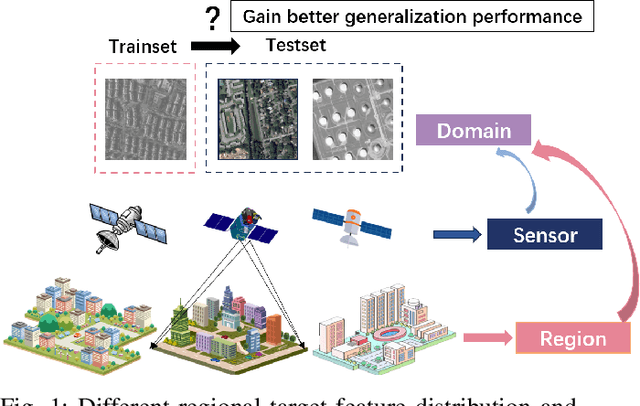
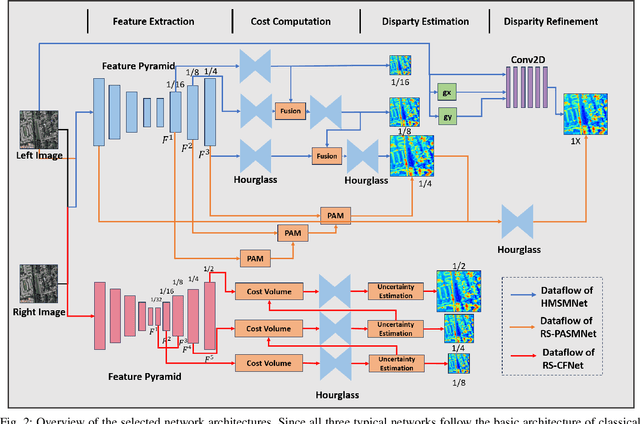
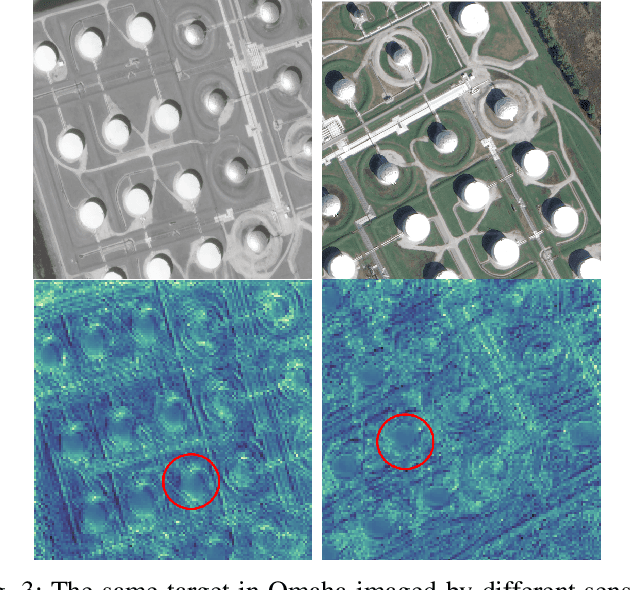
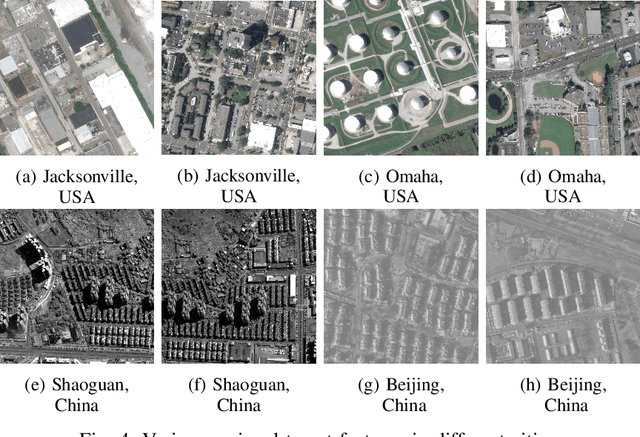
Abstract:Stereo matching, a critical step of 3D reconstruction, has fully shifted towards deep learning due to its strong feature representation of remote sensing images. However, ground truth for stereo matching task relies on expensive airborne LiDAR data, thus making it difficult to obtain enough samples for supervised learning. To improve the generalization ability of stereo matching networks on cross-domain data from different sensors and scenarios, in this paper, we dedicate to study key training factors from three perspectives. (1) For the selection of training dataset, it is important to select data with similar regional target distribution as the test set instead of utilizing data from the same sensor. (2) For model structure, cascaded structure that flexibly adapts to different sizes of features is preferred. (3) For training manner, unsupervised methods generalize better than supervised methods, and we design an unsupervised early-stop strategy to help retain the best model with pre-trained weights as the basis. Extensive experiments are conducted to support the previous findings, on the basis of which we present an unsupervised stereo matching network with good generalization performance. We release the source code and the datasets at https://github.com/Elenairene/RKF_RSSM to reproduce the results and encourage future work.
Official-NV: A News Video Dataset for Multimodal Fake News Detection
Jul 28, 2024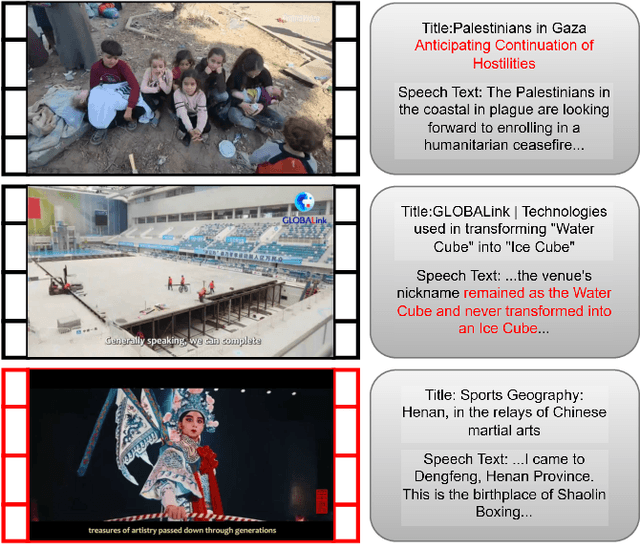
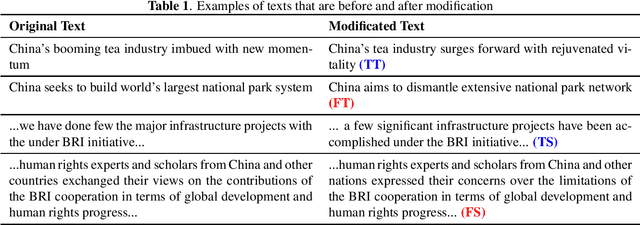
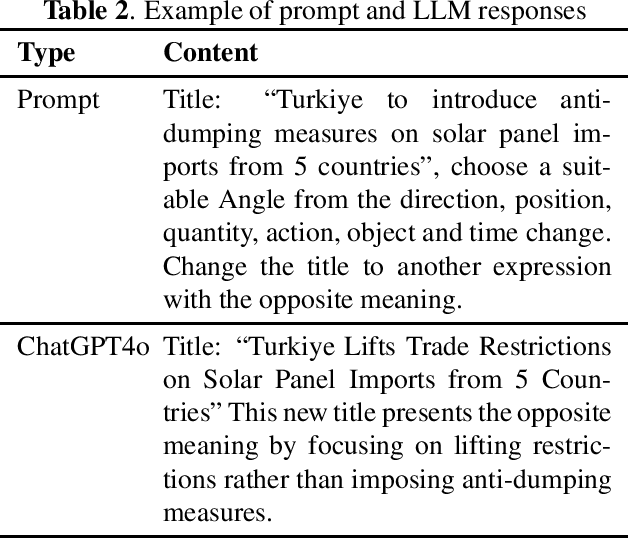
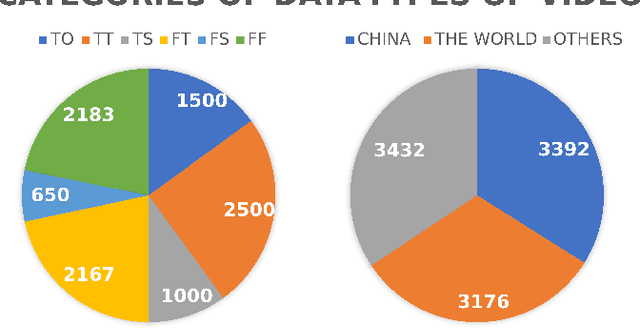
Abstract:News media, especially video news media, have penetrated into every aspect of daily life, which also brings the risk of fake news. Therefore, multimodal fake news detection has recently received more attention. However, the number of fake news detection data sets for video modal is small, and these data sets are composed of unofficial videos uploaded by users, so there is too much useless data. To solve this problem, we present in this paper a dataset named Official-NV, which consists of officially published news videos on Xinhua. We crawled videos on Xinhua, and then extended the data set using LLM generation and manual modification. In addition, we benchmarked the data set presented in this paper using a baseline model to demonstrate the advantage of Official-NV in multimodal fake news detection.
 Add to Chrome
Add to Chrome Add to Firefox
Add to Firefox Add to Edge
Add to Edge